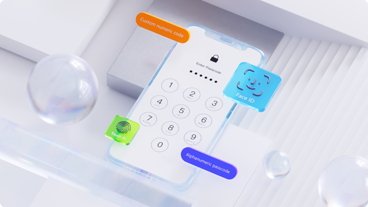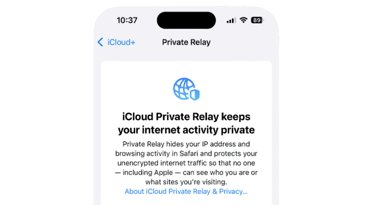Apple filings detail ID app, other potential iPhone enhancements
App for Identifying objects
One of the more interesting filings covers a new identification application apparently under development by Apple that would help identifying objects in a user's surroundings so that their iPhone can present additional information about the identified objects.
For example, today's iPhones are capable of taking a picture of art in a museum, but don't have the capability to provide the user with detailed information about the piece of art, such as the name of the painter or any other related information. Similarly, iPhones can snap pictures of structural items such as bridges and buildings, but not identify them.
Apple's solution calls for a new "ID App" that would automatically determine users' current environment and allow them to select from a list detection technology such as an RFID reader, a camera, or an IR image capture device. Based on the selected mode, the iPhone could then adjust parameters used for searching a remote identification database, or collection of databases.
"For example, if the user selects to identify an object in a 'MUSEUM' mode, the portable electronic device can search the identification database for objects that are commonly found in a museum," Apple says. "In some embodiments, the portable electronic device can determine the location of the user to help identify an object. For example, if the user is determined to be in Las Vegas and the portable electronic device is set to a 'RESTAURANT' mode, the device can limit the search of the identification database to restaurants in Las Vegas."
Meanwhile, objects out in the open such as bridges, buildings or landmarks could, be identified automatically based on GPS or other location services and the direction in which a user is holding their iPhone. Since iPhones are now capable of saving meta-data-based location information in photos, users could also use the ID App to obtain more detailed information on objects in photos that they've previously taken.
In response to detecting that an iPhone is being used in the dark, the ID App could activate an IR image capture device that is capable of detecting objects in darkness. As another example, if the iPhone detects active RFID tags broadcasting signals in a zoo, stadium or other venue, the iPhone could use a built-in RFID reader to detect objects.
Outgoing voice mail recording and playback
Another filings details methods for providing iPhone users with access to voicemails they may have previously sent out to recipients, not just those which are incoming.
"As individuals get busy and assume more responsibilities, they may often forget about messages they have sent to, or left with, other recipients. As a result, when a recipient attempts to get in touch with the sender in order to respond to a message, the sender may not recall the subject of the communication, especially when a message is left unattended for a prolonged period of time," Apple says. "Even worse, potentially, the message may go completely unaddressed whereby the recipient does not respond to the message at all and the sender forgets to follow up on his or her request."
As such, Apple proposes a system that will record and play back outgoing voice mail messages by recording an audio file corresponding to a voice message being left by a user during an outgoing telephone call to a recipient, linking the audio file to contact information associated with the recipient, and providing the user access to the audio file through, for example, playback of the audio included in the file.
Such systems and methods may be implemented through individual communications devices, such as an iPhone, through a telephone communications provider, or a combination of the same, the filing says.
Pre-populated iPhones
In a third filing, Apple notes that consumers cannot currently purchase media players, either in a physical store or via the Internet, that already include media items of interest. Instead, a consumer may generally have to obtain media items of interest and then subsequently transfer them to a media device.
Apple therefore proposes a system by which users can pre-select media items and applications they want on their device at the time of purchase. Tiny metadata files could then be included on the device when its being manufactured, or beamed to the devices immediately after a user opens and begins using them. The media items and applications could then be downloaded immediately to the device so that they're available to users within the first few minutes that they begin using the device.
Text messaging improvements
A couple of other filings detail improvements to an iPhone's text messaging capabilities. The first would allow parents to use parental controls to filter out objectionable content being transmitted to their child's device over text messages.
"The parental control application evaluates whether or not the communication contains approved text based on, for example, objective ratings criteria or a user's age or grade level, and, if unauthorized, prevents such text from being included in the text-based communication," Apple says. "If the control contains unauthorized text, the control application may alert the user, the administrator or other designated individuals of the presence of such text. The control application may require the user to replace the unauthorized text or may automatically delete the text or the entire communication."
The second filing covers a messaging application that can determine whether messages were successfully transmitted from the mobile device to one or more specified recipients. This messaging application would provide a user interface that allows the user to resend the message to those recipients who did not receive the message without them having to retype the entire message.
Lyrics contact sheet
Another filing describes a partially transparent sheet that can be overlaid on content displayed an iPhone or iPod touch. The sheet, which can be manipulated in response to user input, can, for example, include lyrics or other text associated with an audio file currently playing on the media player.
 Sam Oliver
Sam Oliver














 Amber Neely
Amber Neely
 Thomas Sibilly
Thomas Sibilly
 AppleInsider Staff
AppleInsider Staff
 William Gallagher
William Gallagher
 Malcolm Owen
Malcolm Owen
 Christine McKee
Christine McKee










15 Comments
App for Identifying objects
One of the more interesting filings covers a new identification application apparently under development by Apple that would help identifying objects in a user's surroundings so that their iPhone can present additional information about the identified objects.
Right now I'd like to be able to use this technology to closer identify where the thief of my wife's iphone is. I got the street, and probably the house - apartment building, don't you know?. The police were totally uninterested so we had to do a remote wipe, but if I could use some of this technology remotely and the iphone could send me more detailed info about the lowlife who stole the phone - I'd welcome it. Pretty sure that's not the intended use for the new technology, though\
Snapping a photo in a museum is probably not allowed... Still cool idea.
I'm surprised you can patent something like this. Surely it is just an obvious extension of things that have been around for a while like Shazam and Snaptell.
Unless there's some other detail that was left out, the lyrics sheet already exists on the iPhone/iPod Touch.
Right now I'd like to be able to use this technology to closer identify where the thief of my wife's iphone is. I got the street, and probably the house - apartment building, don't you know?. The police were totally uninterested so we had to do a remote wipe, but if I could use some of this technology remotely and the iphone could send me more detailed info about the lowlife who stole the phone - I'd welcome it. Pretty sure that's not the intended use for the new technology, though\
Are you serious? Are you psychotic? Good grief.